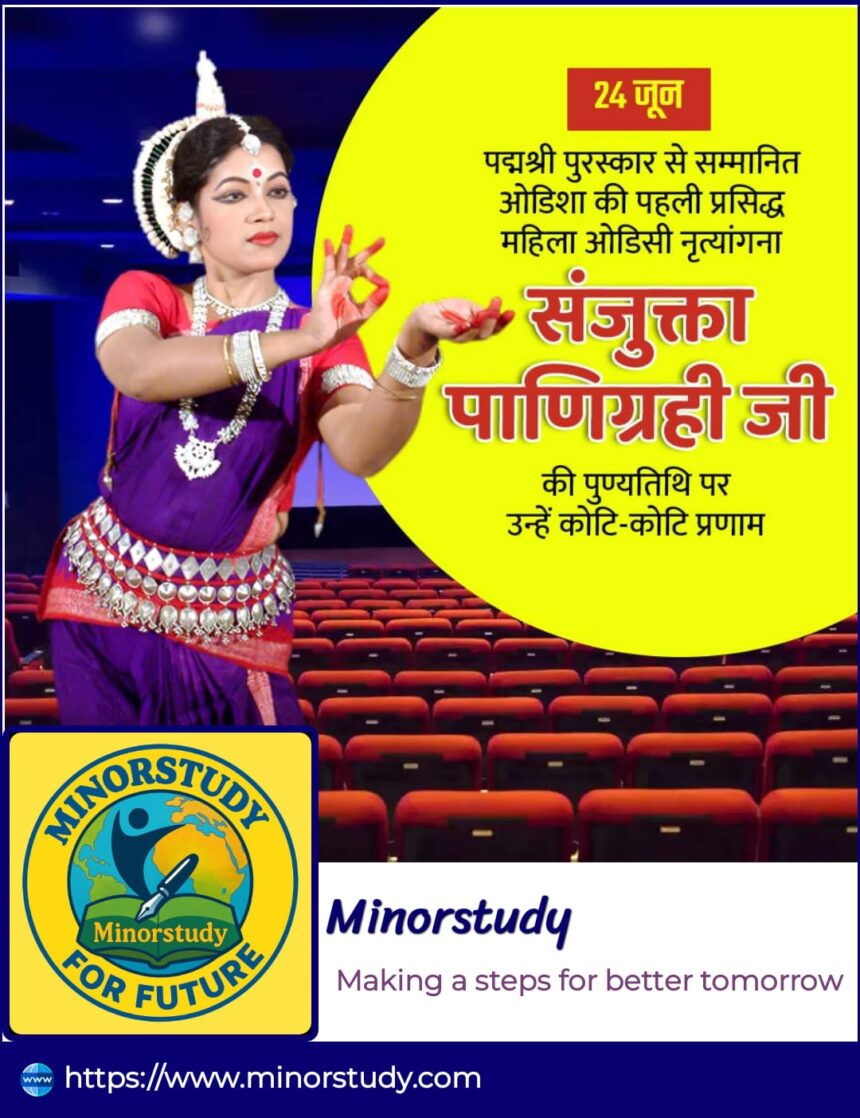Introduction
Sanjukta Panigrahi (1944–1997) was one of the most iconic Odissi dancers of our time. With elegance, devotion, and artistry, she shaped modern Odissi and touched countless hearts. Her legacy still resonates today—through performances, disciples, and the very soul of the dance. This article explores her life, her art’s significance in daily life, her lasting social impact, and the reasons we continue to celebrate her.
1. History & Early Life
Sanjukta was born on October 4, 1944, in Cuttack, Odisha, into a culturally rich family. Her mother Johansson Panigrahi introduced her to music and dance early on. At just 12, she began formal training under the legendary guru Kelucharan Mohapatra—a formative relationship that would shape her destiny.
Over the 1950s and 1960s, Odissi was undergoing a renaissance. Sanjukta became one of its most compelling voices, bridging tradition and experimentation with every performance.
2. Facts You May Not Know
Early Debut: Performed publicly at age 15, stunning audiences with poise beyond her years.
First International Tour: In 1966, she introduced Odissi on the global stage—in England, Germany, and the US.
Lifetime Achievement: Recipient of the prestigious Padma Shri (1975) and Sangeet Natak Akademi Award (1986).
Unique Choreography: Created “Mahisasuramardini,” blending classical technique with theatrical flair.
Collaborative Trailblazer: Partnered with her husband, Raghunath Panigrahi, giving life to Odissi duets and vocal-dance synergy.
Dedicated Teacher: Co‑founded the “Sanjukta Panigrahi–Raghunath Panigrahi Odissi Nritya Mandir” in Bhubaneswar.
Early Departure: Sadly, her luminous journey ended with her passing on April 24, 1997, at just 52.
3. Timeline of Her Journey
| Year | Milestone |
|---|---|
| 1944 | Born in Cuttack, Odisha |
| ~1956 | Started Odissi training with Kelucharan Mohapatra |
| 1959 | First public recital at age 15 |
| 1966 | Embarked on international tour |
| 1975 | Honored with Padma Shri |
| 1980s | Choreographed major dance-dramas |
| 1986 | Received Sangeet Natak Akademi Award |
| 1997 | Passed away, leaving a legacy |
4. Significance of Sanjukta Panigrahi
A Revivalist Icon: Played a central role in shaping modern Odissi as a structured classical form.
Global Ambassador: Helped Odissi gain international recognition—planting cultural seeds worldwide.
Cultural Educator: Her dance conveyed ancient Indian mythology and spiritual values to modern audiences.
Pioneer for Women: As a leading female artist in her era, she broke barriers and inspired generations.
5. FAQs About Sanjukta Panigrahi
Q: What exactly is Odissi?
A: One of the eight major classical Indian dance genres, originating in Odisha. It’s known for sinuous torso movements, storytelling gestures (mudras), and expressive facial dramatisation.
Q: Who trained her?
A: The eminent guru Kelucharan Mohapatra shaped her technique and artistic spirit.
Q: What was her most famous work?
A: Her interpretations of “Mahisasuramardini” (the slaying of the buffalo demon) became legendary, blending pure dance with mythic drama.
Q: Where can you watch her performances today?
A: Through archival recordings, Odissi dance institutes, and sometimes national cultural TV channels. Many of her disciples also recreate her signature numbers.
6. Observance & Commemoration
Though there’s no annual national holiday in her honor, Odissi festivals, especially in Odisha and beyond, often commemorate her birth or passing anniversaries. Institutions like her Odissi Nritya Mandir host workshops, recitals, and cultural programs reflecting her legacy.
7. Why She Matters to Society
Sanjukta Panigrahi’s influence goes far beyond the stage:
Cultural Pride: She helped restore Odisha’s classical heritage, boosting regional and national pride.
Spiritual Connection: Her dance remained deeply rooted in Bhakti (devotion), reminding audiences of India’s spiritual rhythms.
Educational Impact: Through teaching, she encouraged discipline, creativity, and respect for classical arts.
Gender Empowerment: As a revered female cultural icon, she nurtured confidence and respect for women performers.
8. How Her Legacy Impacts Our Daily Lives
Local Dance Schools: Many incorporate her teachings or signature pieces into their curriculum.
Art Festivals Today: Modern Odissi events draw on her repertoire and storytelling style.
Cultural Awareness: Stories from her life inspire broader interest in classical arts and heritage.
Personal Inspiration: Her discipline, creativity, and courage ignite passion in artists, students, and seekers of tradition.
9. Celebratory Wishing
On occasions like her birthday (Oct 4) or death anniversary (Apr 24), enthusiasts and institutions often post lines like:
“Remembering the radiant grace of Sanjukta Panigrahi—may her soul dance forever in our hearts.”
If you wish to honor her, you can:
Perform one of her signature pieces;
Teach or share a clip with a short note of how she inspired you;
Attend a tribute recital;
Post your own “Happy Birthday, Sanjukta Panigrahi!” across social platforms with favorite quotes or photos.
Conclusion
Sanjukta Panigrahi’s life was a masterclass—in culture, devotion, and artistic excellence. For over three decades, she carved out a legacy that continues to shape Odissi’s global journey. She inspires us to live creatively, embrace heritage, and foster dedication in every step—on the stage and in daily life. Her enduring presence reminds us that art can uplift communities, forge identity, and spread joy around the world.








